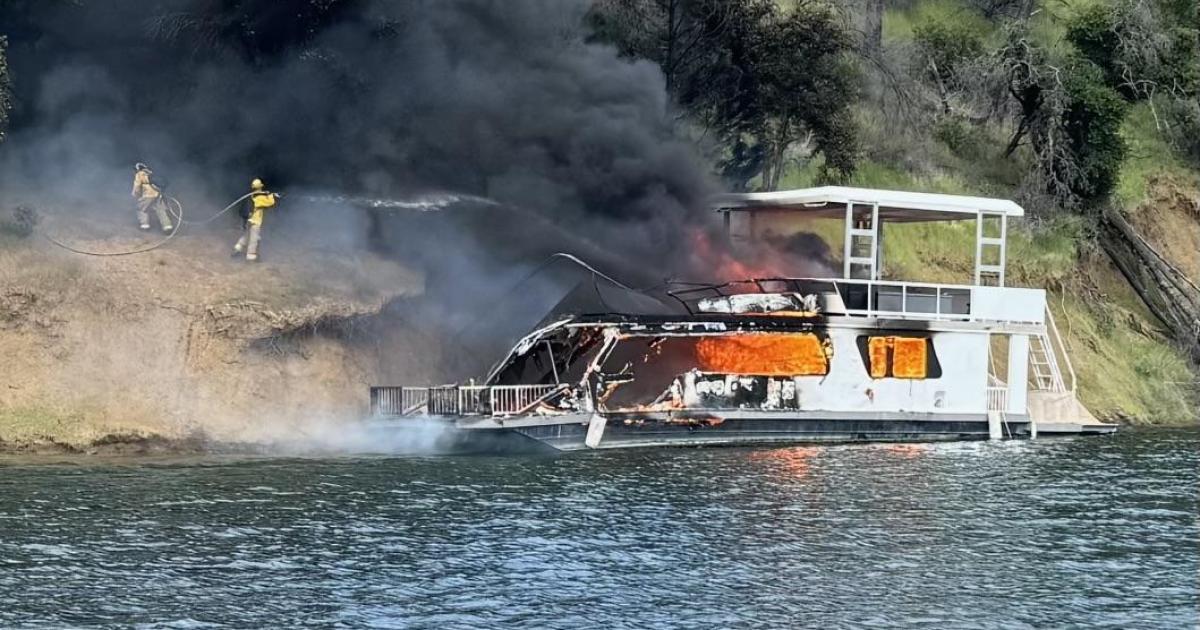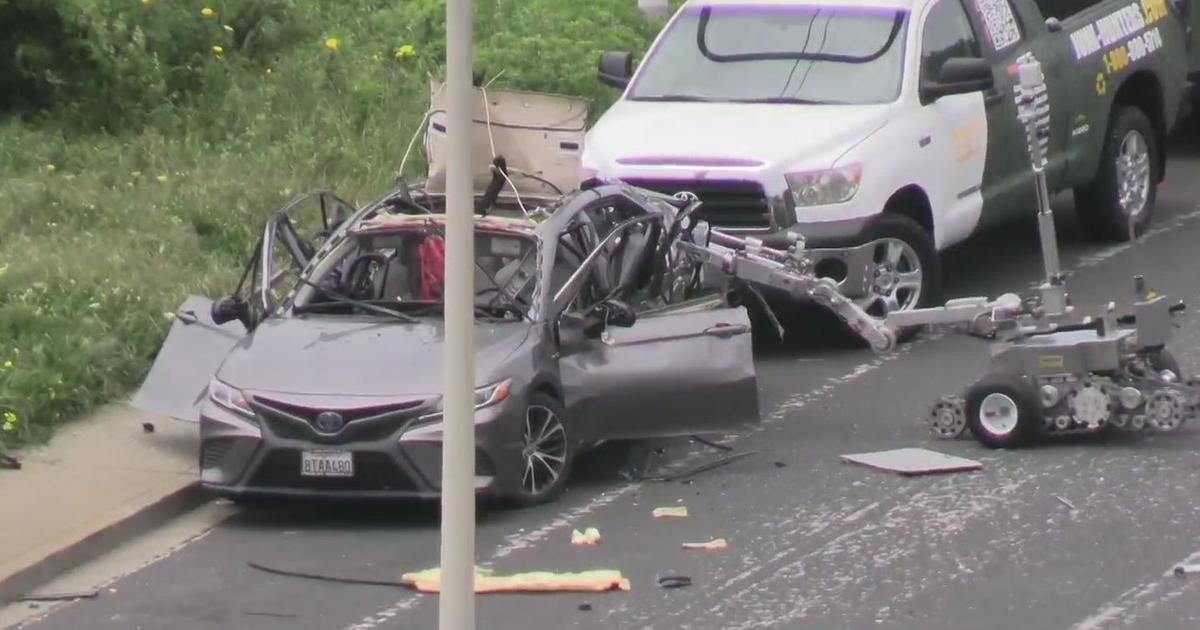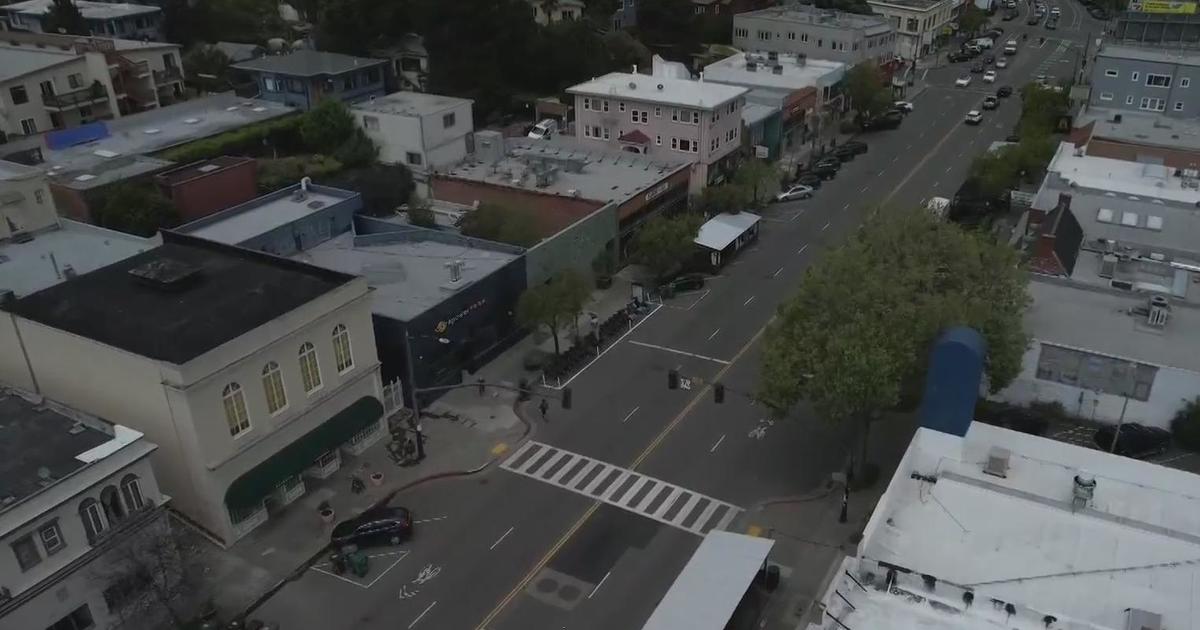143 MPH Fire Tornado Ripped Through Redding During Carr Fire
REDDING (CBS SF) -- It's the kind of finding one would suspect from National Weather Service investigators along Tornado Alley in the wake of a deadly storm front.
But it wasn't. It was the measurement of the wind generated during the height of the firestorm that ripped through Redding last week, killing six people and damaging hundreds of homes.
On Thursday, NWS researcher combed through the wreckage left behind and determined a fire whirl -- commonly known as a fire tornado -- roared through the area between 7:30 p.m and 8 p.m. on July 26th.
It was packing 143 mph winds, turning heavy-duty high tension power line towers into twisted pieces of metal, uprooting trees and ripping the bark off other trees.
ALSO READ:
During his assessment of the battle against the Carr Fire, Gov. Jerry Brown cited the ferocity of the rarely seen phenomena.
"These winds events, wind storms and tornado type behavior -- some of this is unprecedented," he told reporters.
Cal Fire spokesman Scott McLean said the fiery vortexes ranging in size up to 150 feet presented firefighters with a difficult challenge on the night of July 26th.
"It's just a heck of a fight," he said. "They (the firefighters) are doing what they can do and they get pushed out in a lot of cases. We're fighting the fight right now."
He said the fire behavior was so erratic there were tornados within the fire "tossing around equipment, blowing out windows of Cal Fire pickups."
The fire whirls may occur when intense rising heat and turbulent wind conditions combine to form whirling eddies of air. These eddies can contract into a tornado-like vortex that sucks in burning debris and combustible gases.
"This giant rotating cylinder on top of the fire, composed of smoke, pulls burning embers and smoldering debris thousands of feet into the atmosphere," Daniel Swain, a climate scientist at the University of California at Los Angeles, told the San Jose Mercury News. ""It allows fire to jump over barriers..It causes it (the fire) to do crazy, very unpredictable things."
The "firenado" rose some 16,000 feet into the air, churning across the ground for a long as 80 minutes.
Whatever you want to call it, the firestorm that burned into Redding last week was not something seen very often.
"Heat, just rapidly rising off the ground, and that's what you saw with this fire whirl: erratic winds, and heating that had to escape," said Michael Kochasic with the National Weather Service. "So it rises, and with that, created this monster fire whirl that we saw. When you have burned evidence, but also the wind evidence, just not a whole lot of debris left on the ground, everything swept away, it was definitely unusual."
Kochasic is part of a multi-agency team still trying to better understand the incredible winds that surrounded and drove the Carr Fire, causing widespread damage even in areas where the fire itself did not burn.
"Preliminarily, they saw uprooted trees, bark stripped from a tree -- which is impressive; that takes an incredible amount of wind -- as well as high-tension power line poled knocked down by the wind," said Kochasic.
The best metric they've come up with for this kind of event: an EF 3 tornado on the Fujita scale.
Professor Craig Clements, Director of the Fire Weather Research Lab at San Jose State University, told KPIX 5 that a fire as intense as the Carr Fire will create its own weather patterns.
"If a fire is intense enough it can create its own winds," he said. "They are winds that occur just around the fire."
Among those winds are fire whirls.
"It's a rotating column of combustion gases so its kind of like a tornado," he said. "It's a vortex that can form at the fire front. It can take the fire to unburned fuel really rapidly."
It was so unusual that even the experts can't quite agree on what this phenomenon should be called.
"The debate will continue on for years, as far as whether or not you classify that as a tornado or a just a really intense fire whirl, said Kochasic. "But they're deadly, and again, it's very unfortunate what happened up there."
That fire probably hit maximum strength right about the time it jumped the Sacramento River and landed in the western neighborhoods of Redding.
An event like this in a populated area is extremely rare, but given the rate at which California's wildfires are intensifying, fire officials worry this is exactly the kind of thing that might start happening more frequently.



